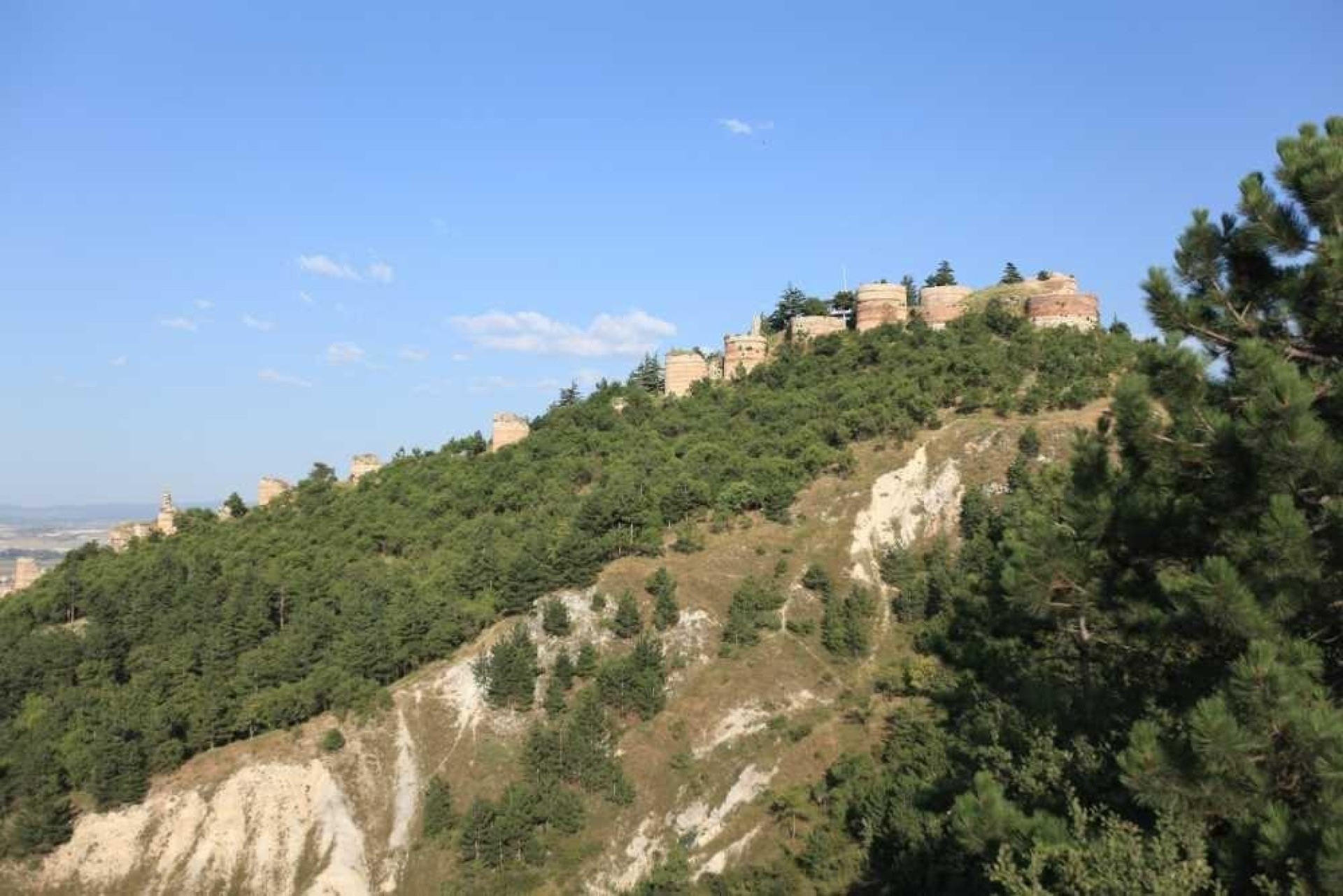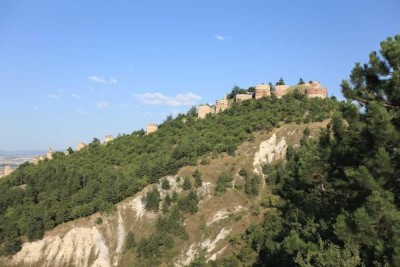
Kütahya Castle, which has been inhabited since ancient times, was strengthened in the 5th century with the walls built by the Byzantines and with the repairs and additions made by the Seljuks, Germiyanoğulları and Ottomans. The castle, which consists of three sections as the upper, inner and lower castles, has tightly placed bastions made of a mixture of rubble and cut stone and brick rows.
The Upper Castle (Kale-i Bala), known as the Orta Hisar Mosque, is in the Maruf District. From the inscription on the stone door, it is understood that it was built by Germiyanoğlu Süleyman Şah in 1377-1378. The minaret base of the structure, which is covered with rubble stone and cut stone in the corners, and covered with tiles, was made by laying two rows of wooden beams between regular cut stones.
The Lower Castle Mosque (Kale-i Sagir), located in the Lower Hisar District, is a small mosque with a hexagonal plan. Although it is plastered with adobe, it is understood that it was made entirely of brick. There is a water facility made of stones under the mosque. It is estimated that this water facility in Lower Castle was built to avoid running out of water in case of a siege.
Kütahya Castle has 72 bastions according to Evliya Çelebi. The bastions are placed at very close intervals. Kütahya Castle also has two fountains, two mosques, a rotating casino and a country coffee house built during the Republic Period. Kütahya Castle is allocated to the Ministry of Culture and Tourism. Some parts of the castle have undergone repairs and landscaping has been done inside.
Source: Kütahya Culture and Tourism Directorate ''Kütahya Introduction Brochure''
